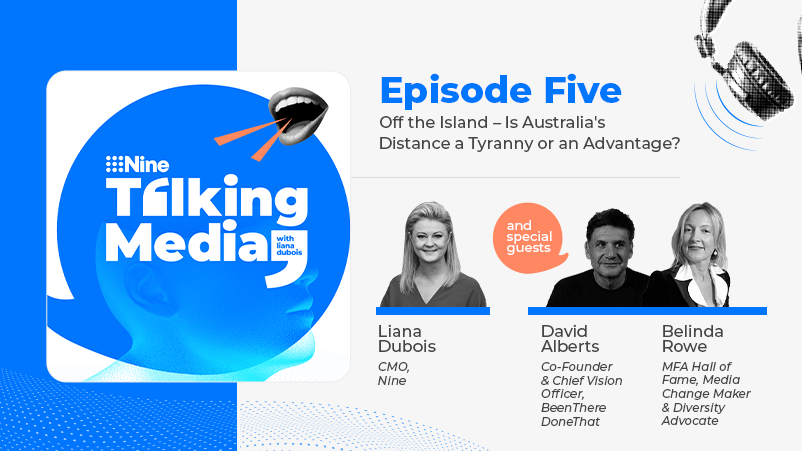TVNZ pays back CDP investment in 12 months through higher-yield advertising buys

New Zealand’s third-largest on-demand TV player, TVNZ, has seen payback on its CDP investment within 12 months through higher-yield advertising buys that are taking advantage of richer audience profiles and more dynamic segmentation. Here, its digital chief talks through the reshaping of its advertising proposition through data and technology investment and how it’s generating insights around top of the funnel for brands for the first time.
What you need to know:
- 12 months ago, New Zealand’s third largest BVOD player, TVNZ, brought on a CDP to drive new segmentation and audience offerings for its advertisers that capitalise on its sizeable store of first-party data and insights.
- The higher yield generated through four new product offerings – Audience Match, Audience IQ, affinity segments, and storytelling – have in some cases generated double-digit yield growth. This has paid off the tech investment within 12 months, GM digital commercial, Rob Hutchinson says.
- It’s also given TVNZ the ability to create nuanced, dynamic, and even bespoke audience segments for big and smaller advertisers to target. Examples include ‘rich listers’, who view content and exhibit a raft of specific behaviours; as well as targeted cohorts such as tradies and CEOs. It takes minutes now, rather than weeks, to build segments.
- TVNZ has struck a second party data partnership with a NZ data broker with country-specific data to further enrich its profiles.
- According to Hutchinson, the combination of CDP, viewer data and individual + household level insight is opening up better understandings of top-of-funnel performance that just haven’t been available to advertisers before.
- A year on, 12 per cent of imagery has rich data attached and the group is set to hit 25 per cent of inventory within the next 12 years.
Margin improvements generated by having a customer data platform (CDP) to deliver higher-yield, profile-based addressable advertising segments has seen TVNZ pay back its technology investment within 12 months, its digital chief says.
Speaking to Mi3 at the recent Adobe Summit, TVNZ GM digital commercial, Rob Hutchinson, said the New Zealand BVOD player made the decision to roll out the vendor’s Real-Time CDP platform with several clear use cases in mind. Number one was how to build segments based on all user behaviours happening across its streaming platform and bundling those in a way that made for a more efficient – and effective – audience buy as an advertiser.
Hutchinson represents the BVOD part of New Zealand’s commercially funded broadcaster, TVNZ. Close to one-quarter of ad revenues at the group are digital now. As a logged-in-only platform, the group has always had first-party data insight on its audiences but traditionally sold through demo audience groupings, much like linear television.
However, as both larger and smaller end-of-town advertisers look for more effective ways to target audiences, TVNZ needed a way to activate its first-party data and realise the full richness already sitting inside the building.
With that first case of rich and more dynamic audience segmentation in mind, TVNZ worked with Adobe Consulting Services to build out more than 2.1 million rich, unified customer profiles including key demographic and online behaviour information. Profiles account for viewers as both individuals and members of a household.
The solution, in turn, led to four new advertising products for TVNZ: Audience Match, Audience IQ, affinity segments, and storytelling. Audience Match provides visibility into how a brand’s customer base overlaps with TVNZ audiences, so advertisers can make data-driven decisions about where to advertise instead of relying on assumptions about what types of shows their customers watch.
“These segments are based on all of the behaviours happening on the platform by users, bundled up in ways to make for a more efficient buy,” Hutchinson explained, including content-led inputs.
“For example, we have a cohort called ‘rich listers’ who are watching programs about rich people basically; we also have sports nuts,” he continued. “Essentially, the sticker tells you exactly what's inside it [the segment]. But it isn't just content consumption and metadata attached with that: The CDP allowed us to plug in every data source.”
In addition, TVNZ can go to a postcode level because of a tool monitoring network performance that cites geolocation of the CTV in the home. With household logins, it could also build out a household graph of audiences.
“Suddenly, we’re able to say a household with kids, as well as a household with older or younger kids. We’re even able to start building really rich views of who the co-viewer might be,” Hutchinson said. “That would have been impossible without a CDP. Unlocking co-view is really important for us because that could be another 50 per cent reach – or even higher.
“We knew if we could measure that actual co-viewer and household, and have rich information about that co-viewer as well - even if it's not their profile being used – it really starts to give us some incredible opportunities.”
Having started with 23 segments, TVNZ now has more than over 100 in play. What’s more, it’s building bespoke segments for a big enough campaign within minutes, rather than the weeks it may have taken manually.
“An advertiser approached wanting to talk to people who predominantly watched on their mobile data not on Wi-Fi. Using that network performance tool, we were able to build that segment for them so they could market heavily to mobile data consumers,” Hutchinson said.
We have a cohort called ‘rich listers’ who are watching programs about rich people basically; we also have sports nuts. Essentially, the sticker tells you exactly what's inside it [the segment]. But it isn't just content consumption and metadata attached with that: The CDP allowed us to plug in every data source
Data matching
Step two for Hutchinson was being able to tee up an advertiser’s owned data sets with TVNZ. This is done via a data clean room sitting outside the CDP, or using Segment Match identity processes for those who also run an Adobe CDP. The match is prepped in TVNZ’s Azure data platform, uploaded to the CDP, and appended to the user profile. At that point, the matched ID can be activated or pushed back to Audience IQ for analysis.
“This has been probably the most exciting product. We've seen two things: Firstly you get a view into the top of the funnel that is usually invisible. Every single marketer in the world is down there at the bottom of the funnel. That's where they can see,” Hutchinson said. “But we actually have the view of the emotional landscape of where intent is formed.
“Marketers have been able to go ‘I can see that my customers have all these behaviours over television’. And because we’re able to include simulcast as well as VOD in that buy, they can use simulcast as a proxy for linear TV. Suddenly, they're able to build a much richer picture of profiles consuming television in real time. When I say a richer picture, I'm talking CMOs being able to say our linear strategy has been really right in these three areas, but this subcategory is watching completely different programming. They've been able to now split spend so one brand goes in one place, while the rest stays on the traditional marketing channel. So it’s reached into linear planning, which I wasn't expecting.”
An example was work done with one of the world’s biggest QSRs to match loyalty member and activity data with TVNZ on a daily basis.
“We could see the impact of the VOD campaign they were running to activation. That’s purely first-party data from loyalty – no cookies are involved. Chrome can collapse away; we were still able to validate that,” said Hutchinson. “What was more exciting for them was we trained a model to essentially look at every single piece of metadata attached to every one of those loyalty program members, find the commonality, and devise intelligent consumption.”
The model was built in TVNZ’s internal data warehouse, which is connected to the CDP in a continuous feedback loop.
“That’s an invisible commonality to any other analytics business in the world and obviously to anyone down at the bottom of the funnel. But it was able to predict we should show to these segments of people because they were more likely to participate in that loyalty activity,” he said.
Such work has been coupled with reporting, measurement and other insights for advertisers through a rich analytics dashboard built in Microsoft Power BI.
Hutchinson said he hoped to become increasingly dynamic with the approach, allowing advertisers to match with TVNZ on a frequent basis.
“That will give marketers a really clear view of the top of the funnel that’s never been available before, and enable them to make decisions. But also to have some confidence on what's happening,” he said.
To further enrich profiles, TVNZ has struck a second-party data partnership with a NZ data broker with country-specific data on intent to purchase, credit information, company size, decision-maker status, and category. This helps TVNZ to create segments such as one made up tradies, and another of CEOs.
To make this happen, TVNZ uses Google Ad Manager and Magnite as its sell-side platform. These platforms broker the best way to distribute impressions for advertisers, rather than allocating by a slot or program digitally. Hutchinson added the media company is dynamically offering simulcast ad breaks and video-on-demand ad breaks as a blend.
“What it means is we’re maximising the highest value profiles for the best yield,” he claimed. “We’re also ensuring broad campaigns all get delivered… an algorithm decides; as an advertiser, you are simply trying to achieve your targeting. In many ways, this means we’re a lot more like YouTube – though not in terms of content quality, of course.
Efficiency and targeting for the big end town is an obvious win. For the small end of town, Hutchinson said TVNZ can provide viable segments using the analytics tool most like their customer bases to target.
“We had a customer match recently with us 2500 IDs was the match, so not much of a campaign against that. But we ran that through our similar audiences model. From there, we were able to build a segment of 100,000 profiles most like that customer base and run the campaign against that. What that means is smaller advertisers can get to television-style scale using those types of techniques,” he said.
Optimising the model
Hutchinson said most new use cases and innovations now are coming from customer demand. “We're working on another second-party data deal right now which emerged from a really important advertiser of ours who said, we can't do this for privacy reasons. But we're able to do this and it's a data set that conforms to what government advertisers are allowed to do. We knew we could get access and have permission to use that data set,” he said.
“That's a classic example of how we've been able to build ideas basically from advertisers trying to achieve their goals.”
When the CDP launched, about 1 per cent of TVNZ’s imagery had rich data attached to it, with demographic data sitting at 70 per cent. It’s now over 12 per cent and expected to stretch to 25 per cent of inventory within 1-2 years. Such data rich targeted inventory is a higher yielding product – TVNZ boasts double-digit improvement on yield in several areas according to Hutchinson.
While he readily admitted building the business case and selling it into executives and technology teams was the biggest challenge in the whole exercise to date, all this has seen the CDP swiftly pay off commercially.
“In the first year, the margin improvement has paid back the project. So we’ve had full payback within 12 months,” he said. “As a story internally that's significant – we got lots of runs on the board.”
Working with Adobe Consulting Services and its design and build process which allowed the pair to co-design use cases that could be tested straight away was a “very efficient way of working”, Hutchinson said.
“Obviously, we made a promise to the business then we were able to ship that promise in the time frames we said. Now I can do another project,” he added.



